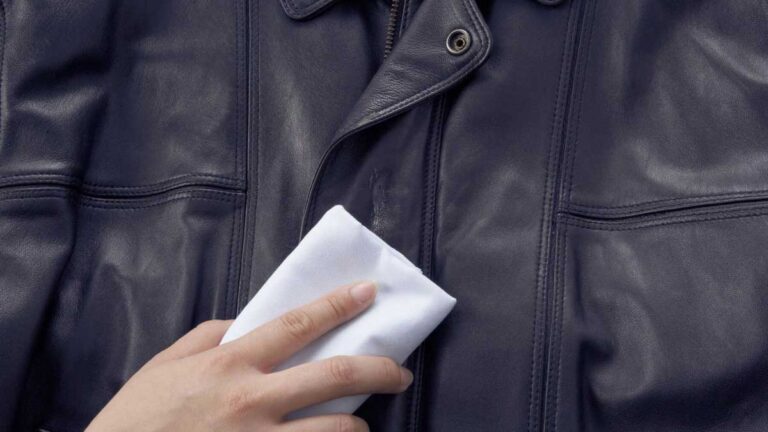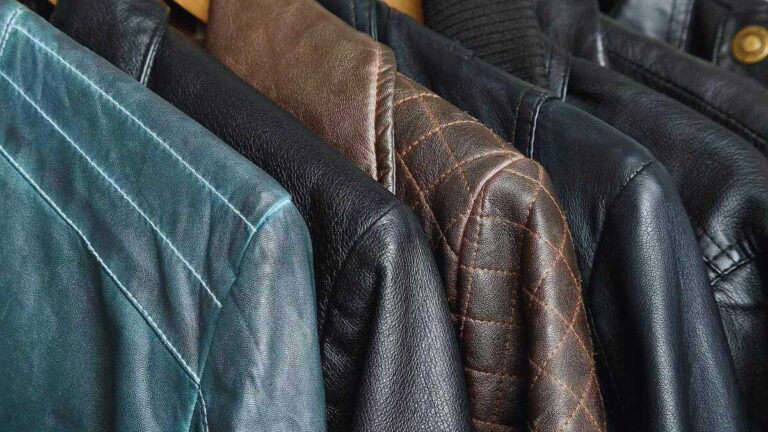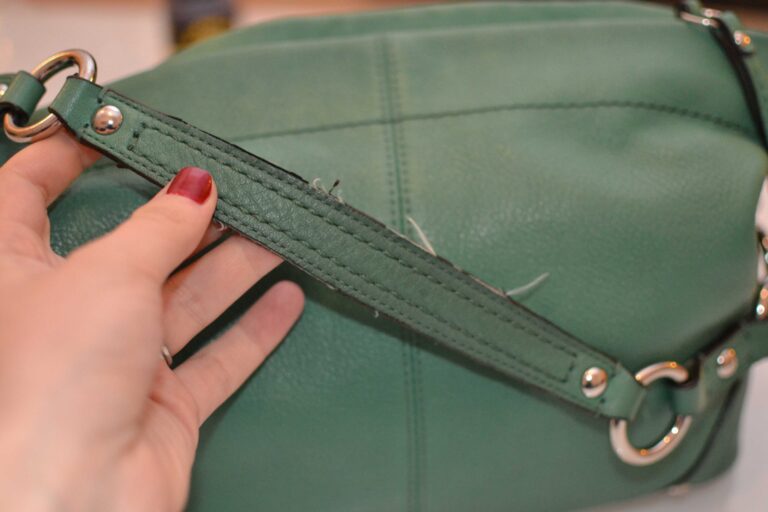How to Paint Leather Jacket: DIY Color Guide
Painting Leather Jackets
Transforming a leather jacket through painting not only revitalizes its appearance but also adds a unique touch of personal expression. This section will guide you on enhancing your jacket’s look and personalizing it through paint.
Enhancing Your Jacket’s Look
Painting your leather jacket can significantly enhance its appearance by masking imperfections, restoring the original color, or introducing a completely new hue. This process offers a way to breathe new life into cherished leather items that have started to show signs of wear and tear (Eiken Shop).
Masking Imperfections
Marks, scratches, or faded areas can make your jacket look old and worn out. Applying paint can effectively mask these imperfections and give your jacket a fresh, updated look.
Restoring Original Color
Over time, leather can lose its vibrant color due to exposure to sunlight and wear. Painting your jacket can restore its original color, making it look as good as new.
Introducing New Hue
If you’re looking to make a bold statement, painting your leather jacket a new color can completely transform its appearance. This can reflect your current style preferences and fashion trends.
| Enhancement Method | Benefit |
|---|---|
| Masking Imperfections | Hides scratches and marks |
| Restoring Original Color | Brings back vibrant appearance |
| Introducing New Hue | Refreshes overall look |
For more on how to care for leather jackets after painting, refer to our detailed guides.
Personalization Through Paint
Leather painting allows you to personalize your jacket, adding a touch of individuality that sets it apart from the rest. This can be achieved through various creative designs and custom elements.
Monograms and Initials
Adding your initials or a monogram can make your jacket uniquely yours. This subtle yet elegant personalization technique is a popular choice for many leather jacket owners.
Quirky Designs
Express your personality through quirky designs such as patterns, symbols, or artwork that resonate with you. This can range from subtle motifs to bold, statement-making graphics.
Favorite Colors
Incorporate your favorite colors into your leather jacket. Whether it’s a single shade or a combination of colors, you have the freedom to create a piece that truly represents you.
| Personalization Method | Description |
|---|---|
| Monograms and Initials | Adds a personal touch with your initials |
| Quirky Designs | Integrates unique patterns or artwork |
| Favorite Colors | Uses preferred shades to reflect personality |
For additional inspiration and techniques, check out our tips on how to create a personalized leather jacket.
To ensure the longevity of your painted leather jacket, proper maintenance is crucial. Follow our recommendations on proper cleaning techniques and long-term preservation tips to keep your jacket looking vibrant and new.
Choosing the Right Leather for Painting
Selecting the appropriate type of leather is crucial for ensuring the longevity and appearance of your painted leather jacket. Understanding the characteristics of different leathers will help you make the best choice.
Best Types for Longevity
When considering how to paint a leather jacket, full-grain and top-grain leather stand out as the best options. Their smooth surfaces allow for even paint application and better paint adherence, which ensures long-lasting results.
| Leather Type | Characteristics | Benefits for Painting |
|---|---|---|
| Full-Grain | The highest quality, retains natural patterns, very durable | Smooth surface for even paint application, excellent longevity |
| Top-Grain | Slightly sanded to remove imperfections, still high-quality | Smooth and consistent surface, good paint adhesion |
Full-grain leather is the highest quality leather available, retaining its natural texture and durability. Its smooth surface allows for even paint application, making it an excellent choice for painting. Similarly, top-grain leather, which has been slightly sanded to remove imperfections, offers a smooth and consistent surface ideal for painting.
Types to Approach with Caution
While full-grain and top-grain leathers are well-suited for painting, other types like suede, nubuck, and bonded leather require careful consideration due to their unique properties.
| Leather Type | Characteristics | Challenges for Painting |
|---|---|---|
| Suede | Soft, fuzzy surface, highly porous | Absorbs paint unevenly, risk of blotchy finish |
| Nubuck | Similar to suede but finer texture, also porous | Paint absorption issues, can lead to inconsistent results |
| Bonded Leather | Made from leather scraps and fibers bonded together | Requires thorough preparation and sealing for paint to adhere well |
- Suede: Known for its soft, fuzzy surface, suede is highly porous, which causes it to absorb paint unevenly. This absorption can lead to a blotchy and inconsistent finish.
- Nubuck: Similar to suede but with a finer texture, nubuck also poses challenges for painting due to its porous nature, leading to potential paint absorption issues.
- Bonded Leather: Made from leather scraps and fibers bonded together, bonded leather can be painted successfully with proper preparation and sealing. However, it requires more effort to ensure the paint adheres well and lasts over time.
Approach these types with caution to avoid potential difficulties and ensure your painted leather jacket looks its best. For more information on maintaining your leather jacket, visit our guides on how to care for leather jacket and how to clean mold off leather jacket.
Preparing for Leather Painting
Proper preparation is crucial for successfully painting a leather jacket. The steps include cleaning and conditioning the leather, as well as sanding and deglazing the surface for better paint adhesion. Each preparatory step plays a crucial role in the final outcome (Eiken Shop).
Cleaning and Conditioning
Before painting, it is essential to thoroughly clean and condition your leather jacket. This ensures that dust, grime, and other contaminants are removed, creating a smooth surface for the paint to adhere to.
-
Cleaning: Use a mild soap or leather cleaner to wipe down the jacket. Pay special attention to areas that may have more dirt buildup, such as cuffs and collars. Once cleaned, let the jacket air dry completely.
-
Conditioning: Apply an oil-based leather conditioner to prevent dryness and cracking (Steelhorse Leather). Work the conditioner into the pores of the leather to ensure it is well-nourished and ready for painting.
| Step | Product Needed |
|---|---|
| Cleaning | Mild soap or leather cleaner |
| Conditioning | Oil-based leather conditioner |
For more tips on leather care, check out our article on how to care for leather jacket.
Sanding and Deglazing
Sanding and deglazing the leather surface help create an ideal texture for paint adhesion. This step should not be skipped as it ensures that the paint will stick properly to the leather.
-
Sanding: Use fine-grit sandpaper to lightly sand the surface of the leather. This helps to roughen up the smooth surface, making it easier for the paint to adhere.
-
Deglazing: Apply a leather deglazer to strip away any existing finishes or coatings on the leather (Eiken Shop). This step removes any remaining oils and waxes, further preparing the surface for painting.
| Step | Product Needed |
|---|---|
| Sanding | Fine-grit sandpaper |
| Deglazing | Leather deglazer |
Following these preparation steps ensures that your leather jacket is ready for painting. For additional insights, explore our guide on how to clean mold off leather jacket to keep your jacket in top condition.
By meticulously cleaning, conditioning, sanding, and deglazing your leather jacket, you’ll ensure the best possible surface for applying paint. This thorough preparation is crucial for achieving a durable and visually appealing finish.
Painting Process
Tools Needed
To paint your leather jacket, you will need the following tools:
| Tool | Description |
|---|---|
| Leather Paint | Angelus Flat White or Flat Black for durability and flexibility |
| Round Paint Brush | For precise application |
| Ruler | To measure and mark guidelines |
| Stabilo Aquarellable | Water-soluble pencil for sketching designs |
| Sharpener | To maintain the pencil’s precision |
| Damp Paper Towels | For cleaning and wiping surfaces |
| Throw Pillow | To provide a smooth painting surface on the jacket |
For a more detailed shopping list, check out Via Calligraphy.
Step-by-Step Guide
Follow this step-by-step guide to paint your leather jacket effectively:
-
Concept and Design: Solidify your copy and concept. Create a digital or pencil draft to scale for proper placement on the jacket.
-
Client Approval: If working for someone else, obtain approval for the draft. Make necessary changes based on feedback.
-
Preparation: Clean and condition your jacket to ensure it’s free from dirt and oil. This helps the paint adhere better. Refer to our guide on how to clean mold off leather jacket.
-
Guidelines: Use the Stabilo Aquarellable pencil to sketch guidelines on the leather. This pencil is ideal as it’s water-soluble and won’t damage the leather.
-
Painting: Paint the design with Angelus Leather Paint. Apply three thin coats, allowing each coat to dry before applying the next. Use the round paint brush for detailed work.
-
Finishing Touches: Let the paint dry completely. Clean up any mistakes with damp paper towels immediately.
-
Curing: Avoid wearing the jacket immediately after painting. Allow the paint to cure thoroughly to prevent smudging.
For more tips on maintaining your jacket after painting, visit how to care for leather jacket.
By carefully following these steps and using the recommended tools, you can successfully paint your leather jacket and give it a unique, personalized look. To further enhance the longevity of your painted jacket, refer to our maintenance tips.
Leather Painting Tips
Mastering the art of painting leather jackets involves adhering to best practices and avoiding common pitfalls. Below are some tips to ensure that your painted leather jacket turns out perfectly.
Best Practices for Success
-
Apply a Primer: Start by applying a primer to create an even surface on your leather jacket. This helps paint adhere better and provides a more uniform finish.
-
Blend Colors Skillfully: For a blended effect, gradually add small amounts of each color at various points on the leather. Work quickly and test your shades beforehand (Vintage Leather).
-
Use Quality Tools: Invest in high-quality brushes, sponges, or airbrushes to ensure smooth application.
-
Protect with Sealer: After painting, apply a protective sealer coat or acrylic finisher. Consider factors such as intended use, ease of application, and durability (Steelhorse Leather).
| Step | Action |
|---|---|
| 1 | Apply primer |
| 2 | Test colors |
| 3 | Blend colors |
| 4 | Use quality tools |
| 5 | Apply sealer |
Avoiding Common Mistakes
-
Skipping Preparation: Never skip cleaning and conditioning the leather. Dirty or oily surfaces will prevent paint from adhering properly. For preparation tips, see our section on Cleaning and Conditioning.
-
Using the Wrong Paint: Ensure you use specially formulated leather paint. Regular acrylics or oil paints can crack and peel over time.
-
Ignoring Heat Settings: Always be mindful of heat when setting your painted jacket to dry. Extreme temperatures can cause the paint to warp or bubble.
-
Neglecting Patch Tests: Always perform a patch test on a hidden area of the jacket to ensure compatibility between the leather and the paint.
For more specific advice on ensuring the longevity of your painted leather jacket, see our article on how to care for leather jacket. Avoid these common mistakes, and your painted leather jacket will remain a vibrant, stylish addition to your wardrobe.
Maintenance and Care
Proper maintenance and care are crucial for preserving the quality and appearance of your painted leather jacket. Here are some techniques and tips to help you keep your jacket looking its best.
Proper Cleaning Techniques
To clean a leather jacket, it is essential to handle it with care to avoid damaging the painted surface.
- Hand Washing: Use a gentle liquid detergent recommended for delicate items, such as Woolite, to hand wash your jacket. Turn the jacket completely inside out and submerge it in lukewarm soapy water.
- Rinsing: Rinse thoroughly to remove all soap residue.
- Air-Drying: Air-dry the jacket away from direct sunlight or heat sources to prevent the leather from becoming brittle.
- Conditioning: After drying, condition the leather with a high-quality leather conditioner to maintain its softness and luster (Color Glo).
For specific cleaning needs, such as mold removal, refer to our guide on how to clean mold off leather jacket.
Long-Term Preservation Tips
Ensuring the longevity of your painted leather jacket involves several key practices:
-
Regular Conditioning: Use an oil-based leather conditioner to keep the leather hydrated and prevent dryness or cracking. Work the conditioner into the pores of the leather for the best results (Steelhorse Leather).
-
Proper Storage: Store your leather jacket in a cool, dry place away from direct sunlight. Use a padded hanger to maintain the shape of the jacket and prevent creases. For more information on optimal storage practices, see our article on how to store leather jacket.
-
Avoiding Moisture Exposure: While some leather jackets can withstand light rain, prolonged exposure to moisture can cause damage. For tips on handling wet conditions, refer to our guide on can i wear leather jacket in rain.
-
Gentle Handling: When putting on or taking off your jacket, handle it gently to avoid stressing the seams and painted areas. This helps maintain both the structural integrity and the decorative paint.
-
Professional Cleaning: For deep cleaning or repairs, consider professional services. If you’re unsure whether dry cleaning is suitable, read our article on can you dry clean a leather jacket.
By following these cleaning and maintenance tips, you can keep your painted leather jacket in excellent condition, allowing you to enjoy its unique and personalized look for years to come. For additional leather care tips, see our guide on how to care for leather jacket.







